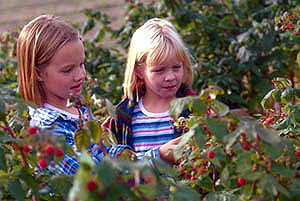RENEGADE GARDENER™
The lone voice of horticultural reason
150 years of Hardy Plants
 When I was a student at the University of Minnesota in the ’70s, the St. Paul horticultural campus existed, I’m pretty sure, though I never had cause to set foot there. The only reason to tread those hallowed fields was if your idea of a good time was juggling entomology, soil science, and advanced biology en route to a degree in Golf Course Turf Management with a minor in sheep farming.
When I was a student at the University of Minnesota in the ’70s, the St. Paul horticultural campus existed, I’m pretty sure, though I never had cause to set foot there. The only reason to tread those hallowed fields was if your idea of a good time was juggling entomology, soil science, and advanced biology en route to a degree in Golf Course Turf Management with a minor in sheep farming.
 No one convinced me otherwise, since my crowd never ran across any of the St. Paul “farm kids” drinking at sorority parties, dining at Mama D’s, or debating William Burroughs late at night in the smoky bars of 7 Corners. Denizens of the St. Paul campus collapsed in their bunks right after supper, we assumed, then arose early, to do their chores before class.
No one convinced me otherwise, since my crowd never ran across any of the St. Paul “farm kids” drinking at sorority parties, dining at Mama D’s, or debating William Burroughs late at night in the smoky bars of 7 Corners. Denizens of the St. Paul campus collapsed in their bunks right after supper, we assumed, then arose early, to do their chores before class.
Twenty years later, when I was no longer an idiot, I realized the St. Paul campus is where I should have been taking classes all along, assuming the University of Minnesota’s internationally renowned College of Agricultural, Food, and Environmental Sciences would have taken me. Ah well. Youth is wasted on the young.
I’m reminded of my college days because 2001 marks the 150th anniversary of the University of Minnesota. And what you’ll find of great interest is that the University has just published a wonderful booklet commemorating the incredible number of hardy plants researchers at the U have introduced to gardeners across the globe over the past many decades.
Cherries, apricots, pears, plums — thanks to the University of Minnesota, you can grow these in the north. Hardy varieties of apples, of course, have been a mainstay of University research ever since the 1920 introduction of the Haralson.
Thanks in part to the U you can also grow many dependable smaller fruits, such as blueberries, raspberries, strawberries, gooseberries, and currants (the Red Lake currant, introduced by the U in 1933, is probably the most popular current grown around the world).
In total, it’s an incredible list. Ornamental trees, shrubs, chrysanthemums, vegetables, grapes, azaleas, we’re talking hundreds of plants made healthy, made hardy, and made here in Minnesota.
Click to the link below to order the booklet, or to view it on-line. One warning: Have some time on your hands.
https://www.maes.umn.edu/publications/hardy-plants
Don Engebretson
The Renegade Gardener